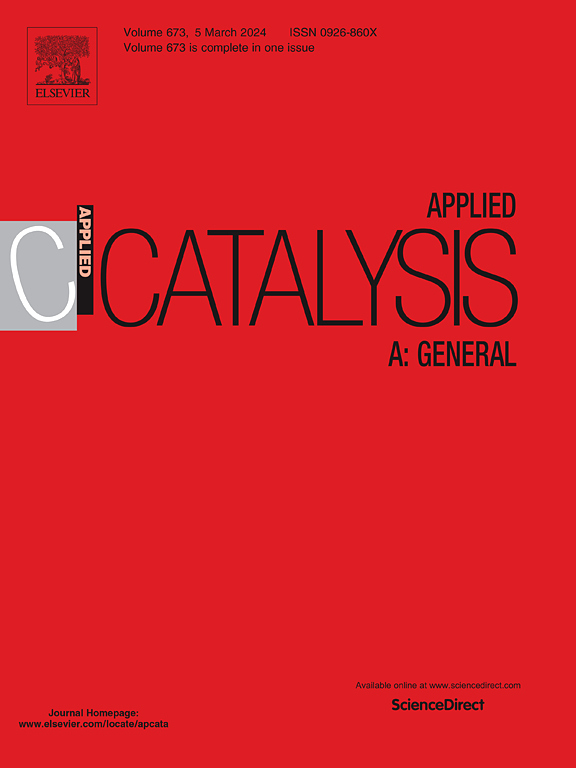Hydrogen bonding effects assisted organic ammonium polyoxometalate salts catalysis for the selective oxidation of methacrolein and mechanism study
IF 4.7
2区 化学
Q2 CHEMISTRY, PHYSICAL
引用次数: 0
Abstract
The selective oxidation of methacrolein (MAL) to methacrylic acid (MAA) is a key step in C4 oxidation for polymethyl methacrylate production, but the limited catalytic activity of polyoxometalates (POMs) hinders their industrial use. Here, we synthesized POM-IL hybrid catalysts via ion exchange and calcination. Ionic liquids disrupted the POM structure through hydrogen bonding, creating oxygen vacancies that optimized adsorption energy and prevented MAL over-oxidation to COx. The hydrogen bonding between ionic liquids and polyoxometalate anions, coupled with ammonium ions derived from ionic liquids, generated a synergistic effect that markedly improves the acidity and redox properties of the catalyst. The catalyst achieved 82.9 % MAL conversion, 88.9 % MAA selectivity, and exceptional stability over 80 h. In-situ infrared spectroscopy and partial density of states (PDOS) analysis identified Mo=Od as the active site, with ester intermediate formation as the rate-determining step. This study uncovers the influence of hydrogen bonding in ionic liquids on the structure-activity relationship of polyoxometalate anions, offering crucial insights into the mechanism of methacrolein selective oxidation.
氢键效应辅助有机多金属氧酸铵盐催化甲基丙烯醛选择性氧化及机理研究
将甲基丙烯醛(MAL)选择性氧化为甲基丙烯酸(MAA)是聚甲基丙烯酸甲酯生产过程中 C4 氧化的关键步骤,但聚氧化金属(POM)的催化活性有限,阻碍了其在工业中的应用。在此,我们通过离子交换和煅烧合成了 POM-IL 混合催化剂。离子液体通过氢键破坏了 POM 结构,产生了氧空位,从而优化了吸附能,防止了 MAL 过度氧化为 COx。离子液体与聚氧化金属阴离子之间的氢键作用,再加上离子液体中的铵离子,产生了协同效应,显著提高了催化剂的酸性和氧化还原特性。催化剂实现了 82.9% 的 MAL 转化率和 88.9% 的 MAA 选择性,并在 80 小时内保持了极高的稳定性。原位红外光谱和部分态密度(PDOS)分析确定 Mo=Od 为活性位点,酯中间体的形成是决定速率的步骤。这项研究揭示了离子液体中氢键对聚氧化金属阴离子结构-活性关系的影响,为了解甲基丙烯醛选择性氧化的机理提供了重要启示。
本文章由计算机程序翻译,如有差异,请以英文原文为准。
求助全文
约1分钟内获得全文
求助全文
来源期刊

Applied Catalysis A: General
化学-环境科学
CiteScore
9.00
自引率
5.50%
发文量
415
审稿时长
24 days
期刊介绍:
Applied Catalysis A: General publishes original papers on all aspects of catalysis of basic and practical interest to chemical scientists in both industrial and academic fields, with an emphasis onnew understanding of catalysts and catalytic reactions, new catalytic materials, new techniques, and new processes, especially those that have potential practical implications.
Papers that report results of a thorough study or optimization of systems or processes that are well understood, widely studied, or minor variations of known ones are discouraged. Authors should include statements in a separate section "Justification for Publication" of how the manuscript fits the scope of the journal in the cover letter to the editors. Submissions without such justification will be rejected without review.
 求助内容:
求助内容: 应助结果提醒方式:
应助结果提醒方式:


